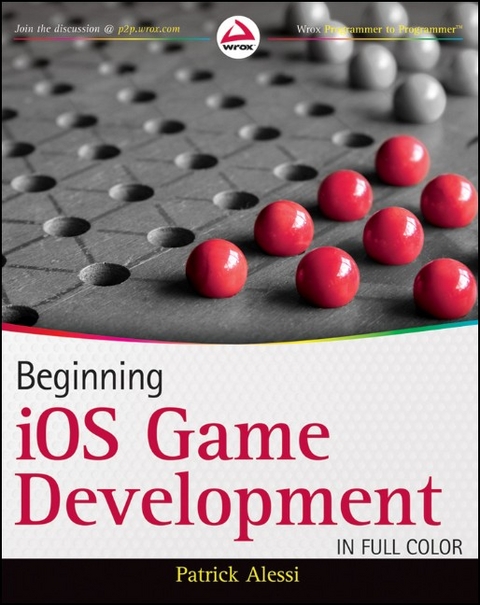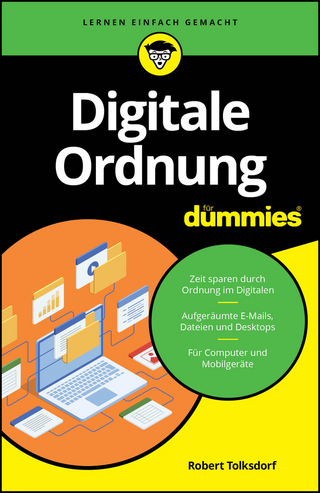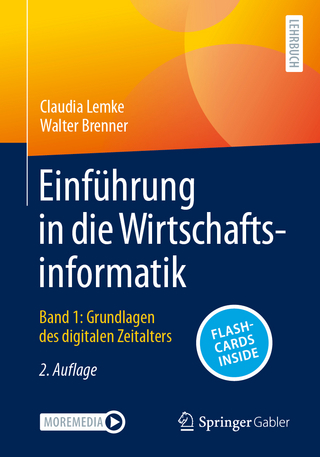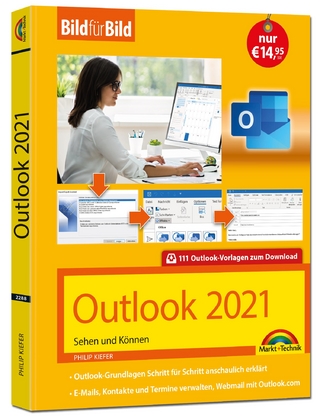
Beginning IOS Game Development
Wrox Press (Verlag)
978-1-118-10732-4 (ISBN)
- Titel ist leider vergriffen;
keine Neuauflage - Artikel merken
Get in the game and start building games for the iPhone or iPad! Whether you only have a little experience with iOS programming or even none at all, this accessible guide is ideal for getting started developing games for the iPhone and iPad. Experienced developer and author Patrick Alessi presents the iOS system architecture, gives you the step-by-step of game development, and introduces the languages used to develop games. From the basic building blocks to including drawing, responding to user interaction, animation, and sound, this book provides a one-stop-shop for getting your game up and running. * Explores the tools and methodology used to develop games for the iPhone and iPad * Requires no previous experience with building a game for the iOS platform * Details how iOS games require different considerations than other applications * Addresses working with the Xcode programming environment, how to draw with the Quartz 2D API, ways to handle user input, and techniques for incorporating animation with Core Animation and sound with Core Audio If you're ready to jump on the gaming app bandwagon, then this book is what you need to get started!
Patrick Alessi has built data-centric applications for clients ranging from small business databases to large-scale systems for the United States Air Force. He is the developer of several applications in the iTunes store, and is the author of Professional iPhone and iPad Database Application Programming. He has also developed a variety of real-time systems, graphics intensive desktop applications, and games. Currently, he is focused on developing connected applications and games for mobile devices such as the iPhone and iPad.
INTRODUCTION xxi PART I: THE TOOLS TO GET STARTED CHAPTER 1: GAMES ON IOS 3 What Makes a Good iOS Game? 4 Device Usage 4 Use Unique Features of iOS 4 Make Your Game Fun 5 Graphics and Design 6 Developing Your Idea 6 Documenting Your Game 6 Prototyping Your Game 7 Preparing to Code 8 Game-Related Frameworks 9 Cocoa 9 Drawing: UIKit and Core Graphics 11 User Interaction: Cocoa Touch 12 Animation: Core Animation 12 Sound: Core Audio 13 Game Kit 14 Summary 14 CHAPTER 2: THE XCODE PROGRAMMING ENVIRONMENT 17 The Coding Environment 18 Creating a Project 19 Navigating Your Project 22 The Navigator Area 22 Navigating by Symbol 23 Searching Your Code 23 Viewing Code Issues 24 Examining Logs 24 Editing Your Code 25 Code Coloring 25 Indentation and Snippets 26 Fix-it 28 Integrated Help 28 Using the Jump Bars 29 The Assistant Editor 30 Xcode Debugging Tools 31 Breaking and Stepping through Your Code 31 Additional Breakpoint Features 35 Building a Simple Interface 36 Summary 42 CHAPTER 3: THE C PROGRAMMING LANGUAGE 45 Introducing C 45 Variables and Expressions 46 Data Types 46 Variables 47 Base Data Types 47 Generating Output and Accepting Input 47 Extending the Data Types 50 Operators 51 Assignment Operators 52 Arithmetic Operators 54 Relational Operators 54 Logical Operators 55 Scope 55 Structures 56 Arrays 61 Loops 64 for Loops 64 while and do while Loops 67 break and continue 72 Execution Flow and Decisions 73 The if Statement 73 The Conditional Operator 74 Choosing an Option with switch 75 Breaking Up Code with Functions 77 Pointers 82 A Game Example 85 Summary 91 CHAPTER 4: THE OBJECTIVE-C PROGRAMMING LANGUAGE 95 Classes and Objects 96 Instance Variables 97 Methods and Messages 98 Managing Memory 104 Automatic Reference Counting 106 Inheritance 107 Building Subclasses from a Base Class 107 Overriding Base Class Methods 110 Polymorphism 111 Building a Game in Objective-C 114 Exposing Class Data with Properties 115 Declaring a Property 115 Accessing a Property 117 Class Methods 117 Implementing the MindPlayer 119 Building the Game Loop 127 Summary 134 CHAPTER 5: THE COCOA FOUNDATION FRAMEWORK 137 Model-View-Controller Architecture 138 Your First iOS Game 138 Building the UI 140 Outlets and Actions 140 Handling Text with NSString 144 NSString Methods 144 Mutable and Immutable Types 144 String Comparison 145 Collecting Objects with NSArray 146 NSArray Methods 146 Modifying Arrays by Using NSMutableArray 147 Wrapping Numbers with NSNumber 147 Other Collection Classes 148 NSSet 148 NSDictionary 148 Building the Game Model 157 Periodic Events and Timers 162 Summary 169 PART II: GAME BUILDING BLOCKS CHAPTER 6: DRAWING WITH UIKIT AND CORE GRAPHICS 173 Introducing the Drawing Frameworks 173 UIKit 174 Core Graphics 175 The Drawing Environment 175 The Graphics Context 175 The UIView Coordinate System 176 The drawRect: Method 176 Drawing Shapes with UIBezierPath 177 Specifying Colors with UIColor 178 Advanced Drawing with Core Graphics 186 Shadows 186 Gradients 188 Starting the Blocker Game with the BlockView 192 Working with Images 197 The Image Classes 198 The View Hierarchy 199 Animation and Timing with CADisplayLink 206 Finishing the Blocker Game 215 Summary 217 CHAPTER 7: RESPONDING TO USER INTERACTION 219 Events in iOS 219 The Event Architecture 220 Event Objects 221 Handling Multitouch Events 222 Building a Simple Touch-Based Game: Simon Says 225 Responding to Motion with the Accelerometer 241 Recognizing Gestures 247 Summary 248 CHAPTER 8: ANIMATING YOUR GRAPHICS 251 Animating Images with UIImageView 252 Introducing Core Animation 255 A Brief Introduction to Blocks 255 Animating UIView Properties and Transitions 256 Property Animations 256 Transition Animations 267 Core Animation Basics 276 Layer Layout 277 Animatable Properties 277 Layer Trees 283 Summary 286 CHAPTER 9: MAKING NOISE WITH IOS AUDIO APIS 289 Playing Simple Sounds with the System Sound Services 290 Playing Sounds with the AV Foundation Framework 291 The AVAudioPlayer Class 291 Format and Performance Considerations 292 Confi guring the Audio Session 293 Playing Multiple Sounds Simultaneously 313 Looping Sounds 313 Media Player Framework 322 Summary 330 CHAPTER 10: BUILDING A NETWORKED GAME WITH GAMEKIT 333 Introducing GameKit 333 Starting Out 334 Networking Your Game 351 NSData and NSCoding 352 Converting Classes to Data with Archives 353 Connecting and Sending Data 354 Running the Game 364 Summary 366 APPENDIX: ANSWERS TO EXERCISES 369 INDEX 385
| Zusatzinfo | Illustrations |
|---|---|
| Sprache | englisch |
| Maße | 187 x 227 mm |
| Gewicht | 749 g |
| Themenwelt | Informatik ► Office Programme ► Outlook |
| Mathematik / Informatik ► Informatik ► Programmiersprachen / -werkzeuge | |
| Informatik ► Software Entwicklung ► Mobile- / App-Entwicklung | |
| Informatik ► Software Entwicklung ► Spieleprogrammierung | |
| Mathematik / Informatik ► Informatik ► Theorie / Studium | |
| Informatik ► Weitere Themen ► Smartphones / Tablets | |
| ISBN-10 | 1-118-10732-2 / 1118107322 |
| ISBN-13 | 978-1-118-10732-4 / 9781118107324 |
| Zustand | Neuware |
| Informationen gemäß Produktsicherheitsverordnung (GPSR) | |
| Haben Sie eine Frage zum Produkt? |
aus dem Bereich


